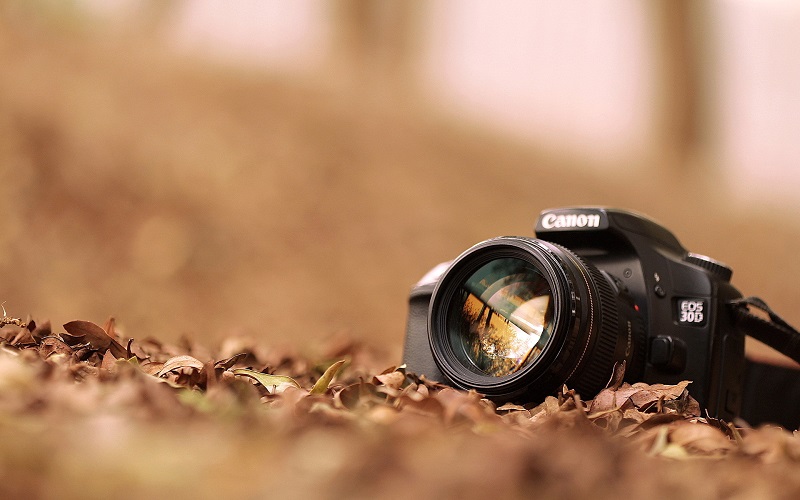It is very common to consider that to get good photographs is necessary to have a great team, and although it is true that this helps, in general it is not necessary to have many means to obtain good results. This is the case for example of the portraits, a field in which modest means and knowing use of natural light is more than enough.
In fact natural light provides more natural results and even helps our relationship with the portrayed more fluid. Especially in the case that we want to portray someone who is not a professional model and who will surely feel much less intimidated than if he is surrounded by a flash gun. As if that were not enough, natural light is much cheaper and prevents us from having to deal with, or load, with complicated gadgets artificial lighting.
So let’s leave aside the idea of the portrait photographer in a studio with a team of flashes, umbrellas and light boxes and venture to use natural light taking advantage of all their possibilities, which are many. Therefore, in the following article we will tell you how to take advantage of natural light to make good portraits.
We miss a lot of general advice for better portraits but do not resist mentioning so you can review them before throw yourself on task. Aspects like what purpose is best suited for portraits, how to improve the bottom of this kind of take it or how to have a good deal with the models.
Of course, neither it is worth reviewing some of the mistakes that often make in addressing this discipline and not dismiss the importance of hands in the portraits; because we must not forget that a portrait is more than a picture of a face.

To know the light
Without a doubt, light is one of the most important aspects of portrait photography because of its crucial aesthetic and psychological contribution.
The four key points that determine how light would be their quality, their intensity, their color, and direction. On the first point , as you know in photography basically talking about two types of light, hard and diffuse; That is to say the one that creates well-defined shadows and high contrasts and the one that does just the opposite. And of course the natural light can appear both ways depending on the situation.
As for the intensity, no need to explain what but should know that although we may seem to be a factor we cannot control talking about natural light, on the other hand we can always dip into resources for it. For example by using a reflector (an element that allows us to add more light to eliminate shadows exploiting the reflection of natural light) to increase the intensity or, conversely, making use of something that lowers the level of light (e.g. a Curtains in interiors or some element that gives shade in exteriors).
Regarding the color temperature, you know that each type of light has a particular dominant color, which affects the image tone. In this case, we speak of natural light and therefore with a bluish tonality in most of the day but in the first or last hours of the day turns orange. Not to mention that in the light reaching interior can be adulterated by the elements of the environment and offer different shades because, as you know, color is not a feature of the objects but depends on other variables.
Finally, the direction of light refers to the path followed by it and may be front, side, rear, zenith or nadir. Its incidence is crucial since it allows to reinforce or to soften the forms and the volume of the objects photographed. The front light minimizes volume and shadows, whereas on the other hand the side and back light accentuates shadows and textures and defines the outline of objects. The back light in concrete allows to achieve silhouettes and effects like the aura around the figure, but by contrast attenuates the color of the subject photographed.
The overhead light, on the other hand, is the one that impinges from above and therefore is typical of the sun. And although it helps to create depth, since it allows us to separate the objects from the foreground of the background, if it is very hard it can create very strong shadows in the eyes that spoil the portraits. Finally, the nadir light is just the opposite of the zenith, that is, the light that illuminates objects from below. It is an illumination that produces quite strange shadows but as it is very rare in nature we should hardly worry about it.
Speaking of natural light, it is not uncommon to think that this type of lighting is only found outdoors, that is on the street or in the field, but of course, we must not forget the interiors, where windows and windows give way to a light which can give very good results.
Thus, although natural light is not as controllable as the artificial light, knowing their variables we can always take advantage of it for our purposes. In addition, we use only natural light does not mean we will discard the support of certain elements such as reflectors are before we cited or some kind of diffusers.
You may also like to read another article on BlogsMujer: 11 jobs you will love if you dream of traveling all the time
How to take advantage of natural light: Exteriors
When working with natural light, it is clear that the properties we have pointed out have a very close relationship with the specific situation we choose and the hours of the day. As you know, if we talk about exteriors, we certainly have in our hand to take advantage of the lighting provided by the sun but has very specific characteristics.
During most of the sunny days, its light is very hard and arrives in a zenith, which is usually not very suitable for portraits because it causes shadows in that element as important in a portrait as the eyes. However, in the early hours of the day and at dusk its light is quite soft and warm and on cloudy days the sunlight comes in a much more diffuse and with a colder tones.
Of course, the choice of one type of light or another is something very personal and will depend mainly on the goal that we want to achieve with our photo. It is clear that making a portrait with hard light is not the best to make the model “handsome” but who said that is what it is to do a portrait? Quite the contrary, the photographer’s capacity for expression should be above all else.

In any case, it is clear that the best light for portraits is usually diffused light, and that is why there are a number of places and times that are usually more conducive to it. Of course on cloudy days, when the clouds act as a diffuser and provide a very soft light. But what if the day is sunny?
For we can always turn to places like the porch of a building, under a bridge or in the shade of a tree. In all these places, if the day is sunny, you will achieve good illumination but with an impossible softness in full sun and above you can get an attractive background for the snapshot.
If we cannot take refuge in one of these places there are other more modest resources such as using an umbrella or umbrella, perhaps making this element part of the portrait or simply using it as a light diffuser, and always be careful with the color of the element in question. Another similar element that we can use is a hat or wide-brimmed hat that prevents direct light from touching the face of the model.
All of these tips can be very useful to achieve diffused lighting to full sun, but if we are in one of those magical moments of dusk or dawn surely be a good time to take advantage of the direct light of those hours. A slightly softer light that sticks sideways and has a very warm tone that is usually very attractive in portraits.
How to take advantage of natural light: Interiors
As far as the interiors are concerned, of course we are talking about using the light that enters through the windows of the place where we are, so much depends on how big the window chosen and its orientation. Note that it is not the same a window in which the sun directly affects one looking north. Thus, the light that enters can be hard or diffuse, although in the first case it will not be complicated to blur it with something like a curtain or a tissue paper.
More importantly in this case is to keep in mind that the intensity of light coming from the windows usually decrease rapidly upon entering the room. Thus, although our eye deceives us and makes it appear that the whole room has a similar illumination, the amount of light entering it diminishes rapidly as the objects move away from the window. So, in order to take good advantage of its light, we will normally have to get close to it, and in order to compensate for the strong contrasts that can occur in the faces (and that you may not see at first glance) you can always use a reflector.
And with this we have ended up hoping that our advice has been useful and placing our readers to offer us their own recommendations in this regard.



